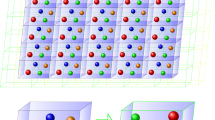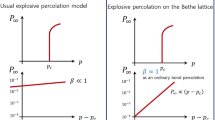Abstract
We discuss the properties of a recently proposed model of quantum chaotic billiards in two and three dimensions. The model is based on a tight-binding Hamiltonian in which the energies of the atomic levels at the boundary sites are chosen at random between -W/2 and W/2. The energy spectra show a complex behavior with regions that obey Wigner-Dyson statistics, and regions with localized and quasi-ideal states distributed according to Poisson statistics. Whereas at low energies long-range energy fluctuations follow Random Matrix Theory (RMT) for all W, at high energies fluctuations are below (above) RMT for small (large) W. For small W, the mean free path l is proportional to L/W 2, L being the system size, and reaches a minimum for W of the order of the band width, at which l ≈ L/2. In 3D we found that the energy fluctuations of the highest occupied level are much larger than the average interlevel spacing. This provides an explanation for autoionization effects of the grains in granular metals.
Similar content being viewed by others
Author information
Authors and Affiliations
Rights and permissions
About this article
Cite this article
Louis, E., Vergés, J., Cuevas, E. et al. A new model of quantum chaotic billiards: application to granular metals. Z. Phys. B - Condensed Matter 103, 297–304 (1996). https://doi.org/10.1007/s002570050377
Published:
Issue Date:
DOI: https://doi.org/10.1007/s002570050377




